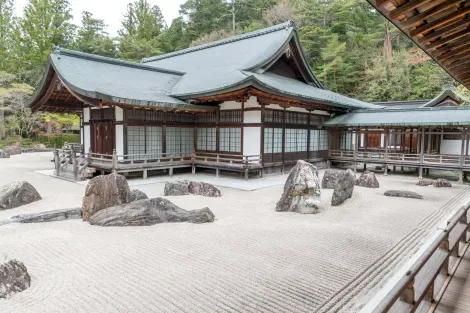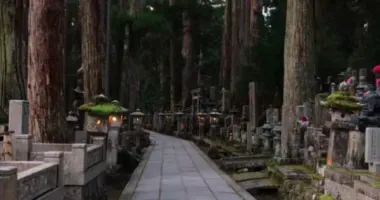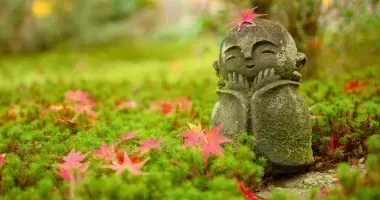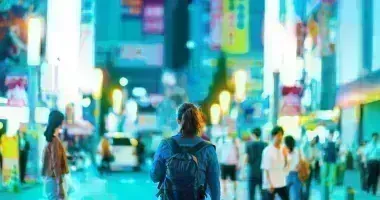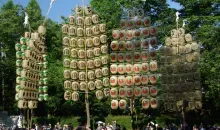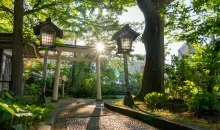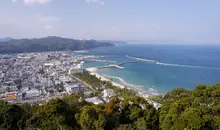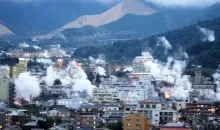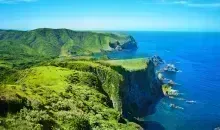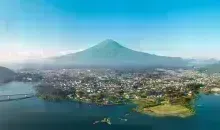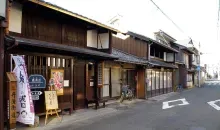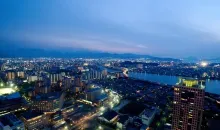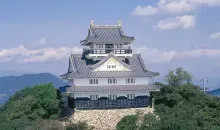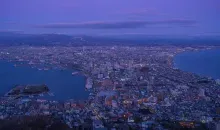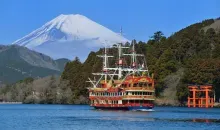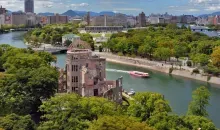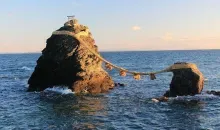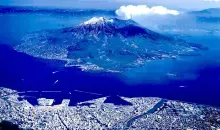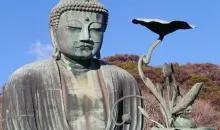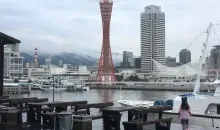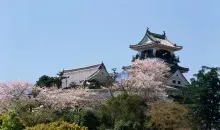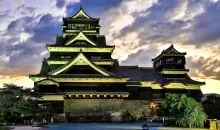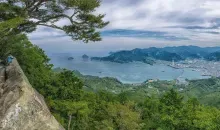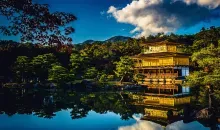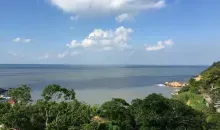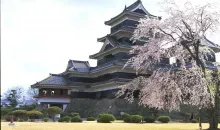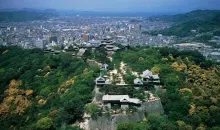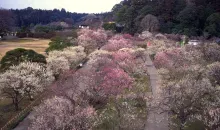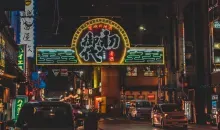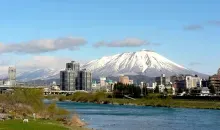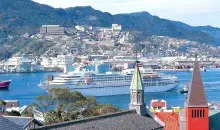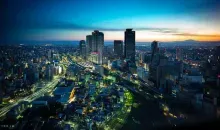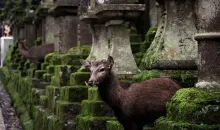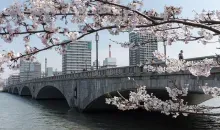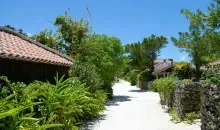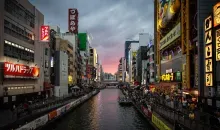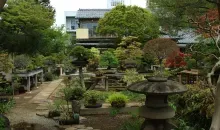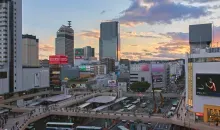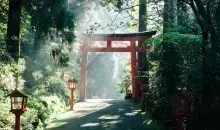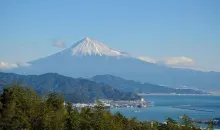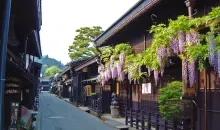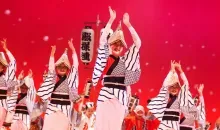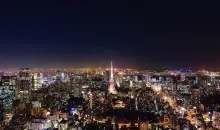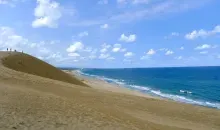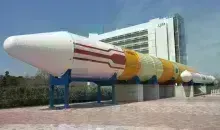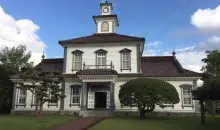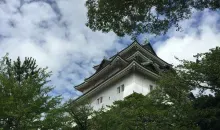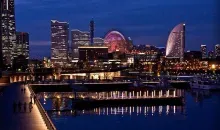Koyasan 高野山
- Published on : 01/12/2021
- by : R.Z. / O.F.
- Youtube
Local Time 21:30
Symbol : sunny_cloudy
Temp : 26.5°C
Date : Today
Symbol : sunny_cloudy
Temp : 25.6°C
Date : Tomorrow
Symbol : sunny_cloudy
Temp : 23.8°C
Date : Saturday
Symbol : cloudy_rainy
Temp : 23.5°C
Date : Sunday
Local Time 21:30
Symbol : sunny_cloudy
Temp : 26.5°C
Date : Today
Symbol : sunny_cloudy
Temp : 25.6°C
Date : Tomorrow
Symbol : sunny_cloudy
Temp : 23.8°C
Date : Saturday
Symbol : cloudy_rainy
Temp : 23.5°C
Date : Sunday
Mount Koya: A religious city with age-old traditions
Arguably the most mystical of Japan's sacred mountains, Koyasan cannot be described but must be experienced. A religious city long closed in on itself, its hostel temples and necropolis forest are an invitation to spirituality.
Direction Mount Koya, a sacred pilgrimage site
Koyasan Mountain (Mount Koya), in Wakayama Prefecture, is a UNESCO World Heritage Site and one of the sacred sites and pilgrimage routes of the Kii mountain range. Koyasan lies on the magnificent wooded Kii Peninsula and is characterized by long avenues of tall Japanese cedars and hundreds of temples and temple gardens.
Behind the windows of the regional train fromOsaka, bound for Mount Koya, bucolic landscapes flash by. Soon, dwellings become scarce and the hills take on an airtight, wooded mantle. Nature is omnipresent. Few people reach the terminus at the foot of the mountain.
There, a red-and-white funicular, resembling a child's toy, lifts its passengers through tunnels of hydrangeas to the monastic city. The journey is not yet over, as the last few sacred kilometers cannot be covered on foot. Koyasan is not easily accessible, and tourists and Japanese alike arrive at their destination in the heart of the city by bus. In the past, pilgrims entered the sacred precincts through the Daimon, the ancient gate, while women, who only gained access to the complex in 1872, stopped at the Nyonindo.
History of Koyasan
Koyasan Mountain is an important place of pilgrimage for followers of the Shingon school of Buddhism. Shingon Buddhism is a form of esoteric or tantric Buddhism introduced to Japan in the 9th century by the monk Kukai (774-835), who was known after his death as Kobo Daishi.
He is a mythical figure in Japanese history, credited with the invention of the hiragana script, as well as an eminent scholar, court official, poet, linguist and calligrapher. After receiving permission from Emperor Saga to build a complex of Shingon temples and a religious retreat at Koyasan, work began on the site in 816.
Pilgrimage and tourism at Mount Koya
Koyasan has been open to tourism since the mid-20th century. Shukubo temples, previously reserved for pilgrims, were soon transformed into hotels with rooms equipped with televisions, and became extremely popular. The commodification of the sacred has not spared Mount Koya, and it's not uncommon to come across monks in cassocks out shopping in their luxury cars. Today, the accommodations on Mount Koya quickly sell out in spring and autumn.
Yet the spirit of Koyasan is still very much alive. Even caught up in modernity, the community still lives timelessly. The local specialty, gomadofu, is still made according to the oldest traditions at the Hamadaya store, and in 2004, the town was listed as a UNESCO World Heritage Site. Even malicious tongues cannot deny the unique and deeply spiritual experience of a stay in Koyasan. After a day or a year, it's impossible to put your feet back on the ground unchanged.
The temples of Mount Koya, and what to see in Koyasan
Of Koyasan's seven thousand inhabitants, almost half are monks and the rest are family members, the result of marriages that took place after the arrival of women. With still 110 active temples, the city, headquarters of the Shingon school of Buddhism, remains an influential religious center.
- Visitors enter Koyasan through the vast vermilion Daimon Gate, which is protected by two fearsome wooden Kongo warriors. On a clear day, the Daimon Gate offers a magnificent view of the surrounding Kii district.
- The 48.5-metre-highKonpondaito pagoda was built for esoteric rituals and houses five sacred images of Buddha. The current structure dates from 1932, the pagoda having been destroyed by fire on several occasions.
- Kongobuji, home to Koyasan's highest priest, serves as the mouthpiece of the religious community. The latter focuses primarily on the cult of the founder of the Shingon sect, Kûkai (774-835), better known in Japan as Kôbô Daishi. A key figure in Japanese Buddhism, he still inspires the greatest respect among the local population and Buddhists in general, who never fail to pay tribute to him, as on the occasion of theAoba Matsuri, the festival celebrating his birth. Founded by the warlord Toyotomi Hideyoshi on the death of his mother and rebuilt in 1861, Kongobuji temple contains screen paintings by Kano Tanyu and other painters of the Kyoto Kano school.
- The Banryutei rock garden, within Kongobuji temple grounds, is the largest in Japan, with 140 granite stones arranged to suggest a pair of dragons emerging from the clouds to protect the temple.
- North of Kongobuji is Nyonindo temple, on the way to the cable-car station. Women were not allowed to enter Koyasan until 1873 (although the practice of forbidding entry continued until 1916) and this small temple marks the place where women could worship, without going any further.
- Kondo Hall is said to be the site where Kukai gave his first sermons and is considered one of Koyasan's most sacred places.
- To the west lies the "sacred precinct", Danjo Garan, built on the site of Kukai's original temple, with its many religious buildings and vermilion pagoda towering majestically over passing onlookers.
- Jealous, Koyasan has placed its most prized possessions in a museum, the Reihôkan, to best preserve them from the ravages of time and bad trade. The museum's exhibits, which include paintings, statues, mandalas and other religious objects such as vajras (ritual scepters) and rosaries, are renewed five times a year.
- The Tokugawa family tomb was built by the third shogun of the Edo period, Tokugawa Iemitsu. The first shogun, Ieyasu, and his heir, Hidetada, are both buried here.
The Okunoin Cemetery
The legends surrounding Kôbô Daishi 's existence abound, and many still believe him to be alive and meditating in the depths of the Okunoin cemetery, where his mausoleum is located. Covering a large part of the eastern part of the city, this forest of a thousand graves contributes to the mysterious aura of Mount Koya.
Okunoin, or the" InnerTemple ", is Koyasan's cemetery: a magnificent and mysterious necropolis of vast cedars and mossy tombstones to the east of central Koyasan.
The estimated 500,000 tombs in Japan's largest cemetery include those of important historical figures. The most famous is that of Kobo Daishi, whose mausoleum is located here. It is also the resting place of the warlord Oda Nobunaga, and the monks Dogen, Honen, Nichiren and Shinran. There are also war memorials and even the tombs of some major Japanese companies(Kirin Beer, Nissan, Toyota).
There are guided evening walks in English through Okunoin. Tickets can be purchased at the Eko-in temple and start at 7.15pm that evening, depending on the availability of a monk to guide your group, and the weather.
- See also: Okunoin Cemetery
How to get to Koyasan
- By train:
-The Koyasan World Heritage Ticket by Nankai Railway is a rail pass offering round-trip travel to Mount Koya by Nankai Railway, unlimited travel on Mount Koya buses and discounted admission to selected tourist attractions for up to 2 consecutive days from the selected day.
Note: this ticket cannot be used on the day of purchase
- From Osaka Namba station to Koyasan : Take the Nankai Koya line to Gokurakubashi station (approx. 90 minutes). Then take the cable car to Koyasan.
- From Osaka to Koyasan: Take a Limited Express train to Hashimoto (approx. 45 minutes). Change to a local train to Gokurakubashi station (approx. 40 minutes).
- From Wakayama to Koyasan : Take the JR Wakayama line to Hashimoto. Then change to the Nankai Koya line.
-From Kyoto and Kobe to Koyasan : It's quicker to go via Osaka station. Take a Kintetsu line train from Nagoya to Namba station (approx. 2 hours). Alternatively, take the shinkansen to Shin-Osaka station (approx. 50 minutes) and change to the Midosuji subway line for connections south to Osaka.
-Using the Japan Rail Pass from Kyoto : Take a JR train to Osaka station. Then take the Osaka Loop Line to Shin-Imamiya. Finally, change to the Nankai Koya line at Shin-Imamiya.
-From Gokurakubashi station to Koyasan : Take the cable car (five-minute ride, costing 510 yen one way). Weekday times range from 5:27 a.m. for the first departure to 10:42 p.m. for the last, in both directions.
- By air:
The nearest international airport to Koyasan is Osaka's Kansai International Airport (KIX ). There are a few daily flights between Haneda airport and Nanki-Shirahama airport, taking between 1 and 2 hours. On arrival, it's a 3-hour drive to Koyasan.
Getting around Koyasan
- By bus
There are local bus services between the cable car station and Ichi-no-hashi, included in the"Koyasan World Heritage Ticket".
Alternatively, you can rent a bicycle in Koyasan, with services offered by the local tourist office.
- By car
To discover Koyasan and the surrounding Kumano Kodo region, car rental is an excellent option. You can rent cars at Nanki-Shirahama airport and Kii-Tanabe station. Please note that in Japan, it is not possible to use a foreign driver's license directly. However, a license translation service is available, with Japan Experience, to facilitate car rental. The journey from Kii-Tanabe station to Koyasan takes around three hours.
Interested by Koyasan
Discover other cities to explore






